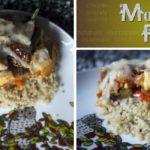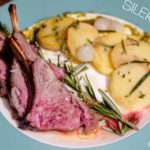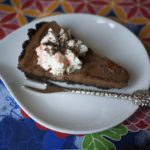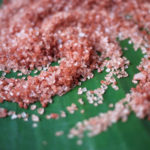
Venison is one of those common, yet rare meats to find. Deer are plentiful throughout the northeastern woodlands and has been an important food since pre-colonial times. But somewhere during the history of America, it became a less common meat and though deer still roam in large numbers, it is hard to find venison in the grocery store or on dinner menus.
Most of my experience with venison has been with the wild kind that has been hunted and meant to feed a family for months. There’s only so much venison jerky you can stomach in the winter months before you need to call it quits. But recently, venison has been making a resurgence in fine dining. I’ve had venison sausage, venison ragu, and most recently venison heart tartare.
That’s why I jumped at the opportunity to receive some grass-fed, free range New Zealand venison from Marx Foods. Venison, like other meats, has unique flavors depending on its habitat and diet. I was excited to compare North American venison to New Zealand venison, especially since it wasn’t “wild” and wouldn’t have the traditional gamey-ness.
Though I created a few meals out of the venison I received, the recipe I am featuring today is from Spirit of the Harvest: North American Indian Cooking. Since I made this the week of Thanksgiving, I thought it seemed appropriate to reach for a very traditional Native American recipe that was simple and focused on the flavor and quality of the meat itself.
The flavors were kept simple out of respect for the venison and served with a warm roasted sunchoke salad tossed with spinach, quinoa, and a ginger vinaigrette. The meat itself was firm yet easy to chew. Pieces that were more rare tasted grassy with a strong iron after taste while pieces that were more cooked had the texture of pork and a more neutral flavor.
About the Venison

Silver Fern Farms Venison is grass fed and pasture raised in New Zealand’s open fields and rolling green hills.
Farmed venison comes from deer born and raised on lush, green New Zealand pastures and has a fresh, consistent, delicate flavor, whereas game venison comes from hunting wild animals, which provides an inconsistent eating experience and a tough, “gamey” flavor. The animal’s natural leanness means it’s a lighter, healthier red meat option. It has more protein than any other red meat and is rich in iron and full of B vitamins.
 Product provided for review. All notes & opinions are my own.
Product provided for review. All notes & opinions are my own.Thank you Marx Foods for the opportunity to taste this unique venison.
Maple-vinegar Marinated Frenched Venison Racks Recipe

By Published: December 6, 2015
- Prep: 10 mins
- Cook: 30 mins
- Ready In: 8 hrs 40 mins
This recipe is from Native American woodland tribes, such as Oneida and Iroquois.
Ingredients
- 1 cup maple syrup
- 1 cup apple cider vinegar
- 6 crushed juniper berries
- frenched venison racks
- 2 tablespoons oil
- Salt and freshly ground pepper to taste
- ½ pound bacon thinly sliced
Instructions
- In a large shallow bowl, combine syrup, vinegar, and crushed berries. Add venison racks, cover, and marinate overnight in the refrigerator, turning occasionally to redistribute the marinade.
- Reserve marinade and remove vension; rub with oil. Sprinkle venison lightly with salt and pepper.
- Preheat oven to 400° F. Stand racks in a shallow oiled roasting pan just large enough to hold them and interlace the ribs to form a standing roast.
- Drape bacon strips over the outside of the roast. Cover bone ends with foil to keep from burning.
- Roast until desired done-ness is achieved, basting 2 to 3 times with marinade during roasting.
- Remove racks from oven and allow to stand, loosely covered, for 15 minutes before carving.
- Serve with rice, quinoa, or roasted sunchoke salad.
- Cuisine: American









Loved how you kept the meat simple, and I also need to check out that Native American cookbook!